Main Menu
Many birds are known for their stunning plumage, but some take their style to the next level with extravagant head feathers too. From flamboyant crests to intricate tufts, these feathered fashionistas stand out not only for their beauty but also for the distinct traits their “hair” represents.
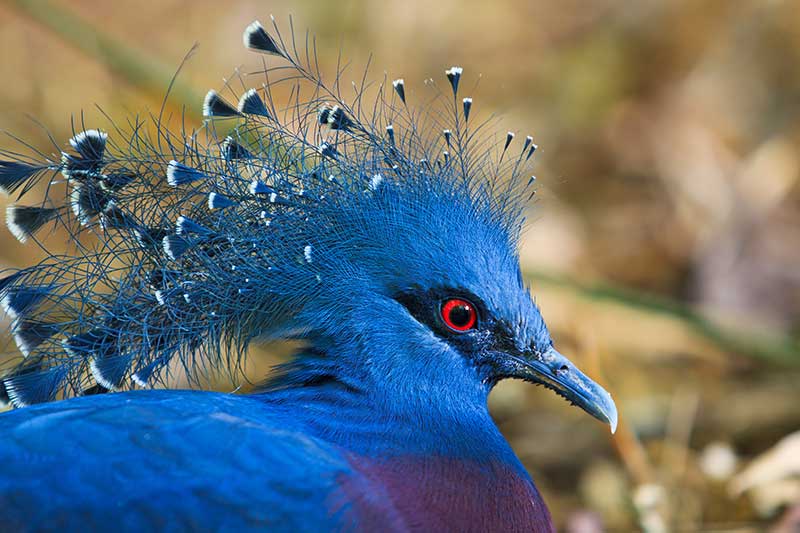
The Victoria crowned pigeon is a large, blue-grey bird with a maroon chest and striking red eyes. It is native to the lowland and swamp forests of northern New Guinea and its surrounding islands.
Named after Queen Victoria, it has an elegant, lace-like blue crest of feathers, with delicate white tips. There are three other species of crowned pigeons, all of which share a similar appearance.
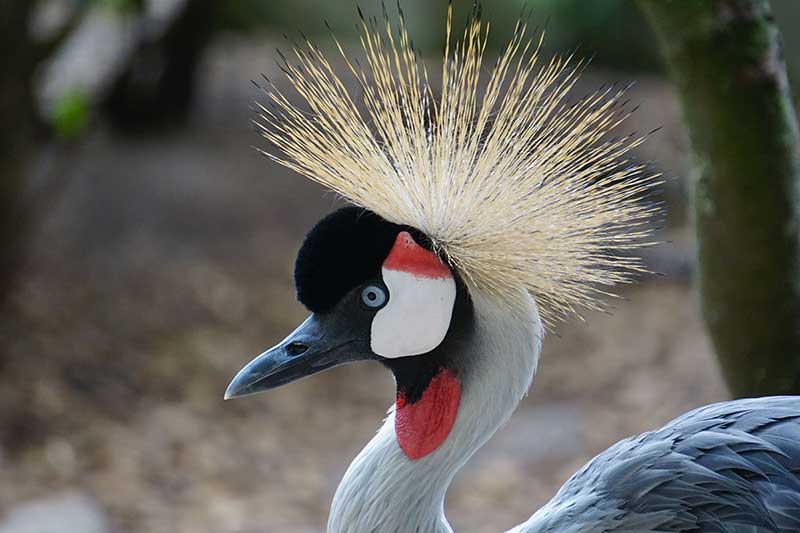
The grey crowned crane, also known as the African crowned crane, golden crested crane, and golden crowned crane, is a striking bird with a mostly blue-grey body, a black-and-white face, and a vibrant red pouch hanging from its throat. Its wings are primarily white, sometimes accented with russet, maroon, and golden feathers.
Found in the dry savannahs of Sub-Saharan Africa, it typically nests in slightly wetter habitats. Both males and females sport a crown of stiff golden feathers around their heads. The grey crowned crane is the national bird of Uganda.
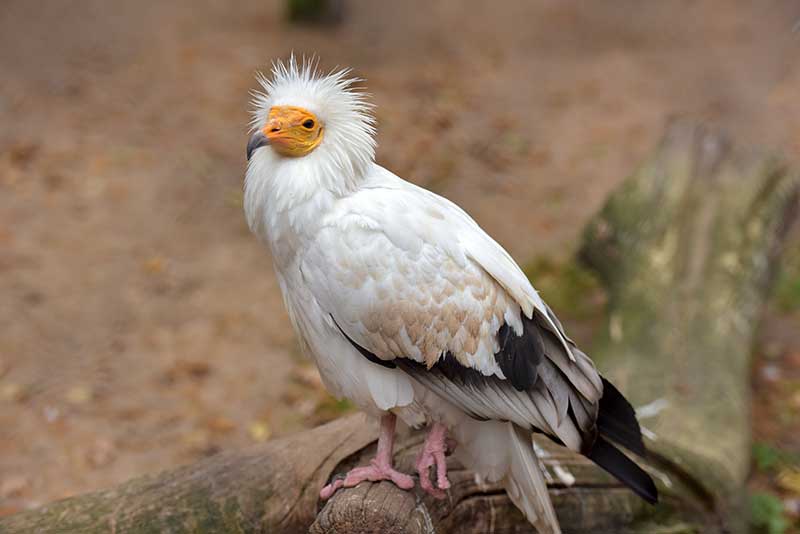
The Egyptian vulture, also known as Pharaoh’s chicken, is an Old World vulture with a white body and black flight feathers. Its plumage often takes on a rusty hue due to iron-rich mud in which it bathes. It has a bare yellow face and a narrow bill with a black tip.
It has an extensive breeding range, spanning from southern Europe and northern Africa to western and southern Asia, migrating to southern Africa for the winter.
The bird’s long neck feathers form a hackle that rises when it is angry or alarmed. The Egyptian vulture is one of the few bird species known to use tools.
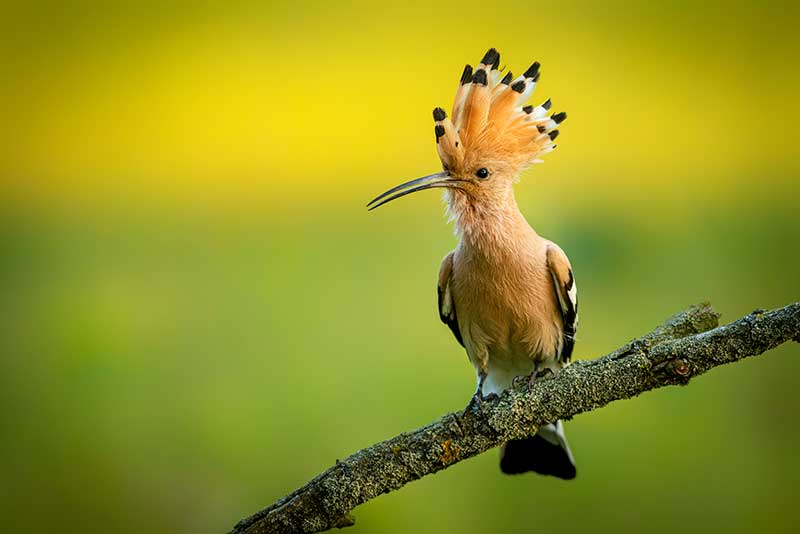
The Eurasian hoopoe is a sandy-coloured bird with black and white striped wings, a black tail with a broad white band, and a long, narrow, downward-curved bill. Its name comes from its distinctive call, a soft “oop-oop-oop.”
This species is widespread across Europe, Asia, and North Africa, as well as northern Sub-Saharan Africa. Those breeding in Europe migrate to Africa for the winter, while those breeding in Africa head to the tropics.
On its head, it has tall, erect crest, tipped with black and white feathers. Typically folded down, the crest fans out during displays. The Eurasian hoopoe is the national bird of Israel.
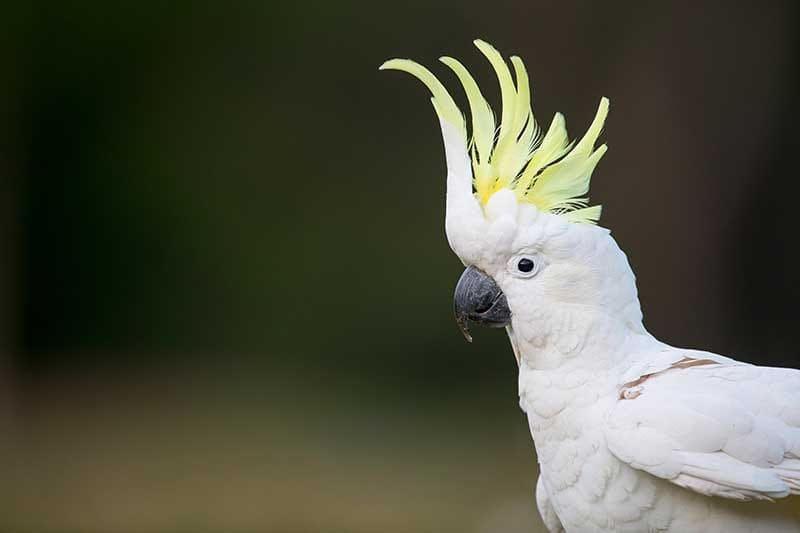
The sulphur-crested cockatoo is a large, white cockatoo with pale yellow underwings and undertail, a black bill, and grey legs. Males typically have dark eyes, while females often have red or brownish eyes.
The species is found in wooded habitats across Australia, New Guinea, and some Indonesian islands.
It has a plumed yellow crest, which the cockatoo can raise or lower it at will, using it to communicate with other members of its species. While they are popular in aviculture, large, locally concentrated populations in the wild means they are sometimes considered a pest.

The great crested grebe is an elegant waterbird with a long neck, brownish upperparts, black-and-white wings, and white underparts. It is found across Europe, Asia, parts of southern and eastern Africa, Australia, and New Zealand, inhabiting freshwater lakes during the breeding season and coastal reservoirs in winter.
It has a black crest on its head and a chestnut-coloured ruff at the top of its neck. The great crested grebe is famous for its elaborate courtship displays, during which both male and female birds puff out their ruffs, shake their heads from side to side, and mirror each other’s movements. The ruff disappears during the winter months.
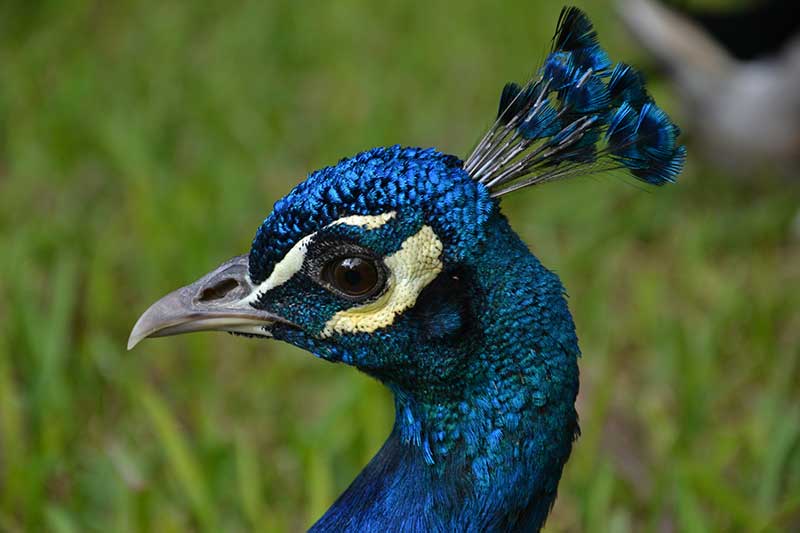
The Indian peafowl, a member of the Phasianidae family, which also includes pheasants, partridges, and chickens, is arguably the best known example of extreme sexual dimorphism. The male has evolved an elongated train of tail feathers, due to sexual selection by the female. Native to most of India and Sri Lanka, it inhabits lowland forests and bushy areas near forests.
The male has a metallic blue crown with short, curled blue-green head feathers, and a fan-shaped crest with bare black shafts tipped with blue-green webbing. In contrast, the female, or peahen, has a rufous-brown head with a chestnut-coloured crest and tips edged in green.
Introduced as an ornamental bird in many parts of the world, small feral populations of the Indian peafowl can now be found in the UK.
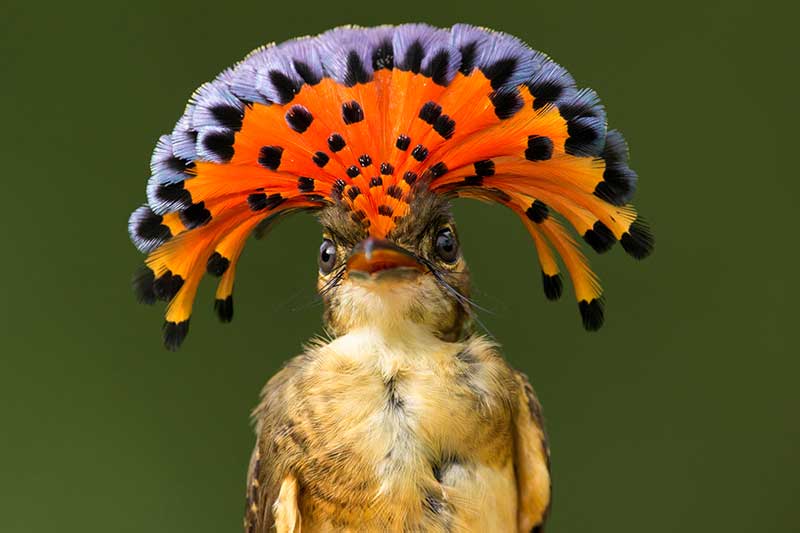
The tropical royal flycatcher is a brown bird with a cinnamon-coloured rump and tail, and a long bill. It is found across South America, from Mexico to Brazil, in humid, tropical evergreen forests of lowland areas.
The male has a striking crest on its head, which is flame red with violet, blue, and black tips. The female’s crest is similar but more orange or yellow. The crest is usually kept down, giving the bird a flat-headed appearance, and is only displayed during courtship, after mating, while preening, or when handled.
A closely related species, the Atlantic royal flycatcher, is classified as vulnerable and is found only in a small region of the Atlantic forest in southeastern Brazil.
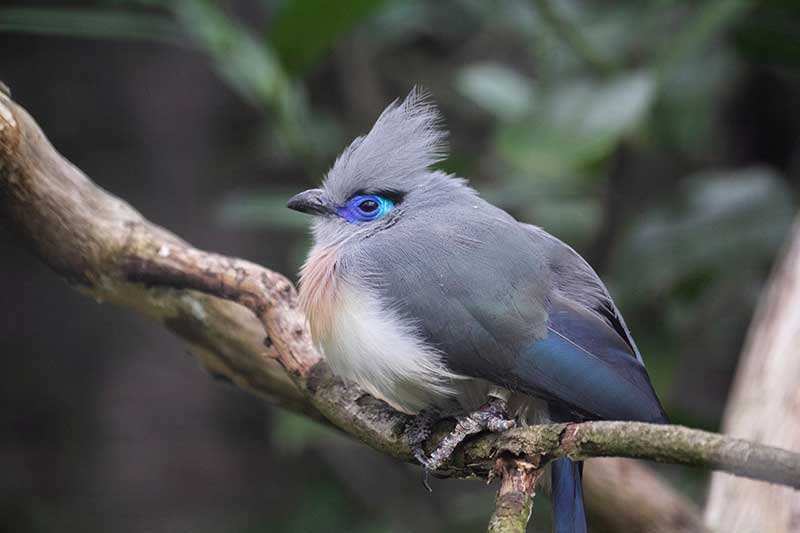
The crested coua, a member of the cuckoo family, has greenish-grey plumage, a white belly, a rufous chest, and a long purplish-blue tail with white tips. Endemic to Madagascar, it is found in coastal regions, including forests, savannas, brushlands, and mangroves.
It has bare patches of blue and turquoise skin around its eyes, and a wispy, pointed grey crest that remains prominent throughout the year.
Inside the chick’s mouth, there are two bright red and white markings resembling bull’s-eyes. These markings guide the parents to the correct spot to deliver food, particularly useful during the darker hours of the day.
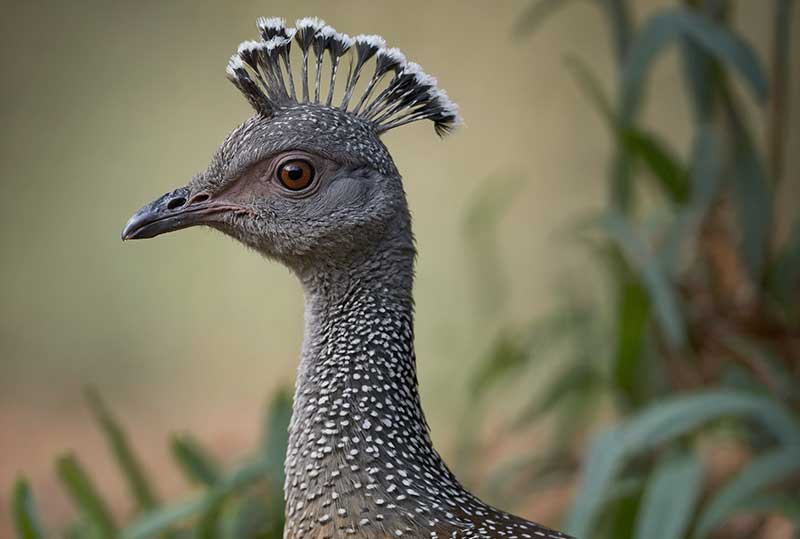
The elegant crested tinamou is a partridge-like ground bird with olive-brown plumage marked by black and white vermiculations. It is found in grasslands, open thickets, dry savanna, and farmland across Argentina and Chile.
It has a long, thin crest of black feathers on its head, typically held back with the tips curved forward. When excited or agitated, the crest fans out, revealing white-tipped feathers.
When alarmed, the elegant crested tinamou stands tall to scan for danger before retreating to cover. It either hides behind vegetation or flattens itself on the ground, dropping its head down to foot level to remain concealed.

The Andean cock-of-the-rock, also known as the tunki, is a member of the cotinga family. The male has brilliant crimson or orange plumage, with a black tail and wings, and grey scapulars, while the female is much drabber and predominantly brown.
Native to the Andean cloud forests of South America, it inhabits ravines and areas near streams. Despite its striking colours, the Andean cock-of-the-rock is a shy bird and can be difficult to spot.
The male has a large, fan-shaped crest formed by two rows of feathers that meet to create a semi-circle, while the female’s crest is more of a tuft than a prominent disc.
The closely related Guianan cock-of-the-rock has a similar crest with a black-edged border.
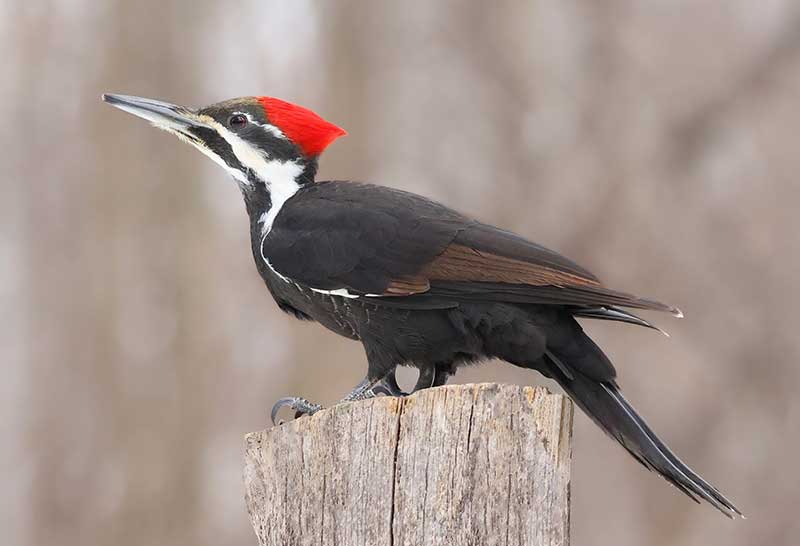
The pileated woodpecker is the largest woodpecker in North America and the third largest in the world. It has a predominantly black body, with a distinctive white line running through its eyes and extending down to its throat. This species typically breeds in forests and wooded parks with mature hardwood trees.
Named for its flaming red, curved crest, the word *pileatus* is derived from Latin, meaning “capped.” Juveniles have smaller crests which are sometimes referred to as “mohawks”.
The pileated woodpecker is known for excavating large, rectangular holes in trees as it searches for ants. These can be so extensive and deep that they sometimes cause small trees to break in half.